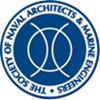Unmanned Underwater Vehicle Autonomy and Control near Submarines Using Actively Sampled Surrogates
IF 1
4区 工程技术
Q3 ENGINEERING, CIVIL
引用次数: 0
Abstract
Many tools have been developed to simulate unmanned underwater vehicle (UUV) motion and autonomous behaviors to evaluate UUV capabilities. However, there is no simulator that performs real-time modeling of the complex hydrodynamic interaction forces that a UUV experiences when operating near a moving submarine. These hydrodynamic interactions must be determined in real time to simulate the launch and recovery of UUVs from submarines. Potential flow models may be fast enough to solve the hydrodynamic interactions in real time, but by oversimplifying the physics and neglecting viscosity, they introduce inaccuracies into the simulations. Computational fluid dynamics (CFD) is capable of accurately modeling these hydrodynamic interactions, but simulations take hours or days to solve. To overcome this obstacle, a machine learning method known as Gaussian process (GP) regression is used to create a surrogate reduced-order-model that predicts the hydrodynamic interactions in real time. The GP regression model is trained by actively sampling CFD simulations in order to accurately model complex hydrodynamic interactions. This new approach allows the GP regression model to be incorporated into a UUV motion simulator and evaluate how the UUV is affected by the hydrodynamic interactions. Operating envelopes are developed that outline regions where the UUV safely overcomes the hydrodynamic interactions and where the UUV is overpowered and collides with the submarine. By incorporating this surrogate model into the autonomy architecture, new autonomous behaviors are created that compensate for the hydrodynamic interactions by adjusting the desired UUV heading and speed which allows it to better stay on course.使用主动采样替代物实现潜艇附近无人潜航器的自主与控制
已经开发了许多工具来模拟无人潜航器(UUV)的运动和自主行为,以评估 UUV 的能力。但是,还没有一种模拟器能够对 UUV 在移动潜艇附近运行时所经历的复杂流体动力相互作用力进行实时建模。必须实时确定这些水动力相互作用力,以模拟 UUV 从潜艇上发射和回收。潜在流动模型的速度可能足以实时求解流体动力学相互作用,但由于过度简化了物理过程并忽略了粘度,因此会给模拟带来不准确性。计算流体动力学(CFD)能够准确模拟这些流体动力学相互作用,但模拟需要数小时或数天才能求解。为了克服这一障碍,我们采用了一种被称为高斯过程(GP)回归的机器学习方法来创建一个可实时预测流体动力学相互作用的代用降阶模型。GP 回归模型是通过主动采样 CFD 模拟来训练的,目的是准确模拟复杂的流体动力学相互作用。这种新方法允许将 GP 回归模型纳入 UUV 运动模拟器,并评估 UUV 如何受到流体动力相互作用的影响。所开发的运行包络线可勾勒出 UUV 安全克服流体动力相互作用的区域,以及 UUV 受力过大并与潜艇发生碰撞的区域。通过将这一代理模型纳入自主架构,创建了新的自主行为,通过调整 UUV 所需的航向和速度来补偿水动力相互作用,从而使其更好地保持航向。
本文章由计算机程序翻译,如有差异,请以英文原文为准。
求助全文
约1分钟内获得全文
求助全文
来源期刊

Journal of Ship Research
工程技术-工程:海洋
CiteScore
2.80
自引率
0.00%
发文量
12
审稿时长
6 months
期刊介绍:
Original and Timely technical papers addressing problems of shipyard techniques and production of merchant and naval ships appear in this quarterly publication. Since its inception, the Journal of Ship Production and Design (formerly the Journal of Ship Production) has been a forum for peer-reviewed, professionally edited papers from academic and industry sources. As such, it has influenced the worldwide development of ship production engineering as a fully qualified professional discipline. The expanded scope seeks papers in additional areas, specifically ship design, including design for production, plus other marine technology topics, such as ship operations, shipping economic, and safety. Each issue contains a well-rounded selection of technical papers relevant to marine professionals.
 求助内容:
求助内容: 应助结果提醒方式:
应助结果提醒方式:


